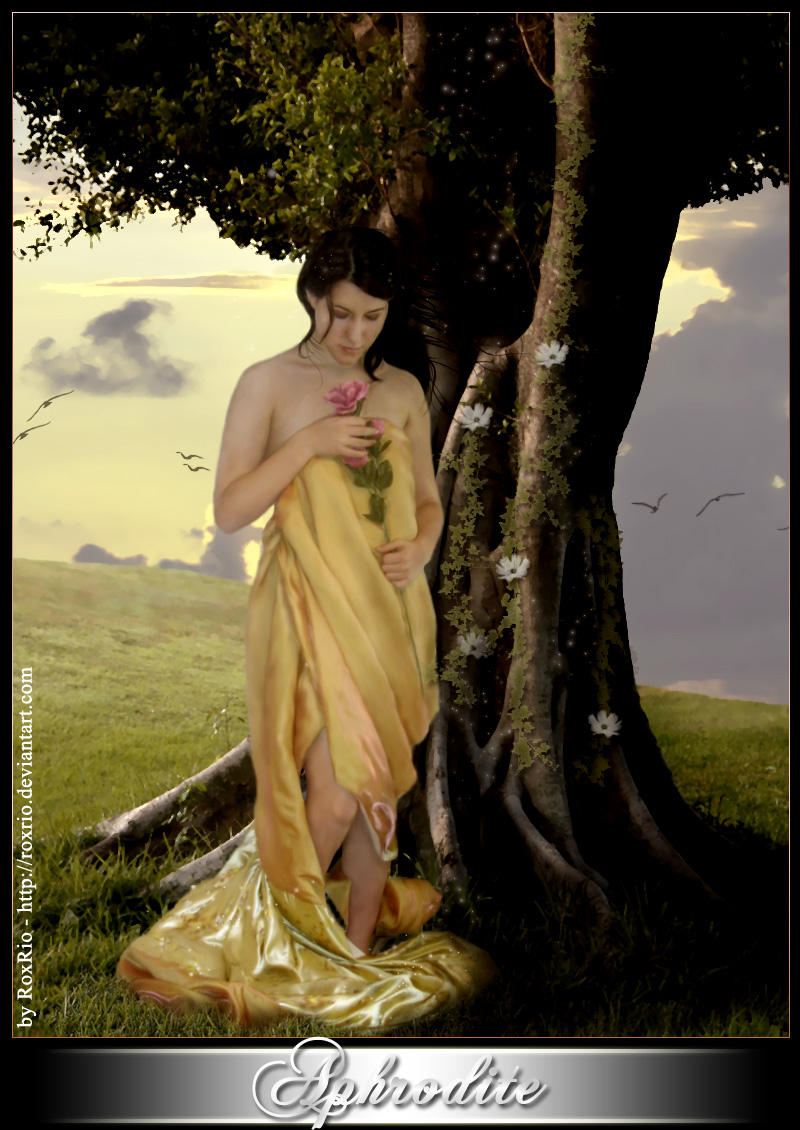 Aphrodite was a Greek goddess of love, beauty and sexual rapture. Her Roman equivalent is Venus. She is directly related to the ancient fertility goddesses and mother goddesses, such as Hathor, Isis, and Astarte. In fact some authorities suggest Aphrodite was Phoenician and was the sister of the Assyro-Babylonian Ishtar and the Syro-Phoenician Astarte. According to some mythological accounts, she was born from the churning and foaming of the sea when Kronos threw Ouranos’s severed genitals into the water (the Greek aphros means “sea foam”), but this story arose later. In it, Aphrodite arose from the roiling sea and was borne by the waves to
Aphrodite was a Greek goddess of love, beauty and sexual rapture. Her Roman equivalent is Venus. She is directly related to the ancient fertility goddesses and mother goddesses, such as Hathor, Isis, and Astarte. In fact some authorities suggest Aphrodite was Phoenician and was the sister of the Assyro-Babylonian Ishtar and the Syro-Phoenician Astarte. According to some mythological accounts, she was born from the churning and foaming of the sea when Kronos threw Ouranos’s severed genitals into the water (the Greek aphros means “sea foam”), but this story arose later. In it, Aphrodite arose from the roiling sea and was borne by the waves to In origin, Aphrodite was obviously a fertility goddess. Her domain covered all of nature, animal and plant. She grew to be viewed in many aspects: as Aphrodite Urania, the goddess of pure love; Aphrodite Genetrix, or Nymphia, goddess of marriage (she was prayed to by unmarried women and widows); Aphrodite Pandemos (common) and Aphrodite Porn (courtesan) as the goddess of lust and venal love, and patroness of prostitutes. She was also Aphrodite the Warrior, represented helmeted and carrying arms. She was so worshiped at
Aphrodite was married to Hephaestus, the god of fire, metalwork and craftsmanship, but was loved by many others, gods and humans. It is said that she roused the passionate desires of all the immortals and all came under her influence, with the exception of Athene, Artemis and Hestia. Her cult, in one form or another, was found throughout the Mediterranean lands. Festivals in her honor, known as Aphrodisia, were common.
Many witches use the name of Aphrodite as the goddess they worship, while others include her in their listings of honored deities. Of the many symbols sacred to her were the dove, sparrow, goose, and swan, the goat, the lynx, and the dolphin. Sacred plants included the rose, myrtle, quince, clover and watermint. Friday is sacred to her and her special festivals are on April 1 and 23, June 23 and July 19. She is associated with the zodiacal signs Taurus and Libra, and connected with the throat, kidneys and lumbar region.







